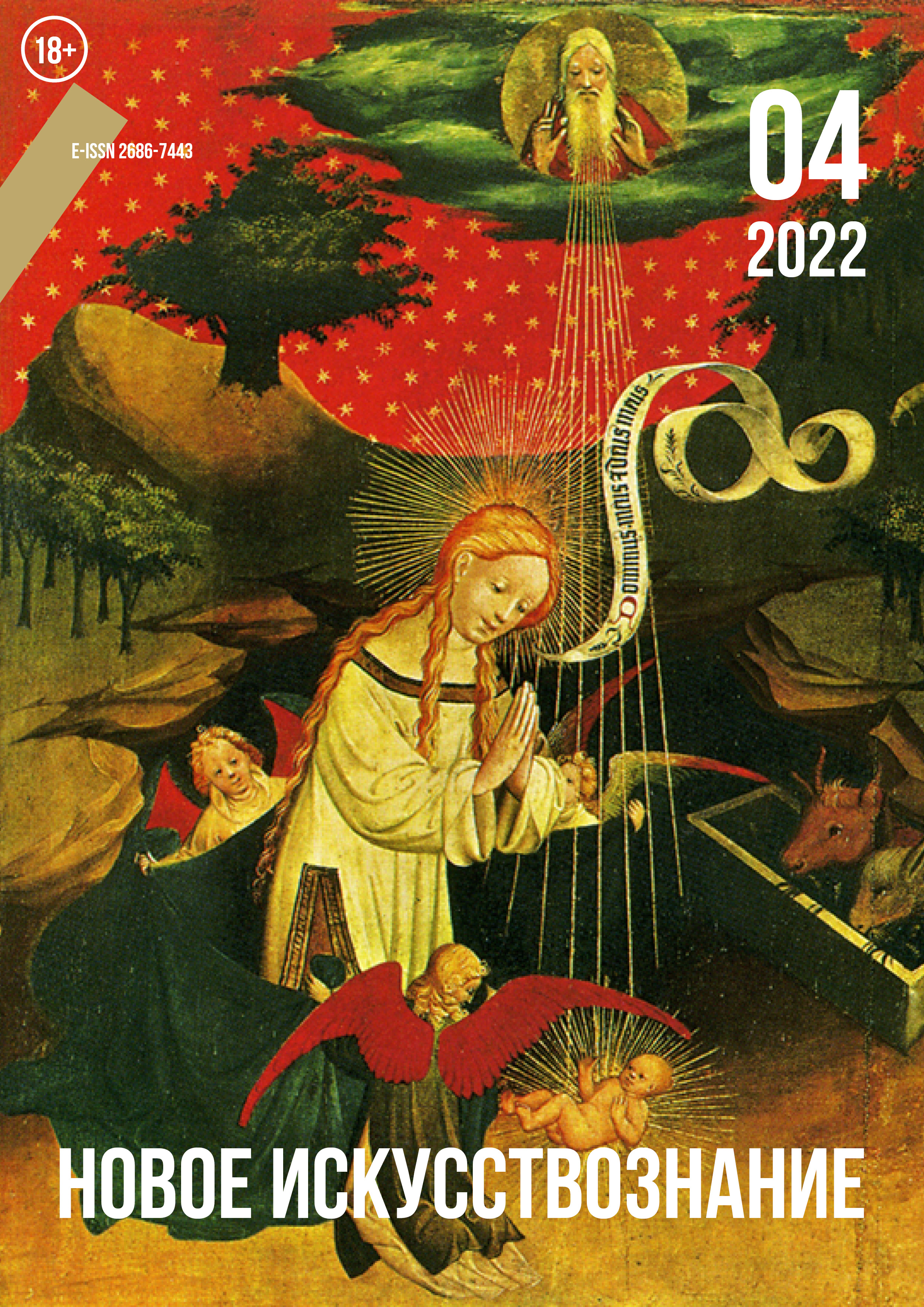ИСТОКИ ТРАДИЦИЙ НАТУРАЛИЗМА В ОБРАЗАХ ПРИРОДЫ ЙОРИСА ХУФНАГЕЛА: МИНИАТЮРЫ И ИЛЛЮМИНИРОВАННЫЕ РУКОПИСИ
Аннотация
Образы природы в изобилии встречаются в творчестве нидерландского художника XVI в. Йориса Хуфнагела. Жуки, стрекозы, мыши, лягушки, грибы, стручки фасоли, орехи и, конечно же, цветы заполняют страницы «Образцовой книги каллиграфии», развлекая зрителя затейливым сопоставлением фактур и обманками. Цветы и плоды, исполненные Хуфнагелом, столь подробно и натуралистично, встречаются на полях часослова Филиппа Клевского, молитвенника Лоуренса ван ден Хауте — старинных духовных книгах, чей декор был дополнен рисунками Хуфнагела в XVI в. Естественнонаучную точность обретают животные в миниатюрах «Четырех стихий», созданных для коллекции императора Рудольфа II Габсбурга в Праге. Эти эмблемы и иллюстрации несут идею диковинного, сотворенного уникальным талантом художника рисунка. Однако, Хуфнагел, хотя и был, по собственному мнению, самоучкой, все же опирался на ряд традиций. В частности, он наследует традицию иллюминирования книг, созданных в регионе Гента и Брюгге в 1480–1500 гг. На страницах этих старинных манускриптов растения и животные стали изображаться разнообразно, подробно, натуралистично, как обман зрения. Их символика сложна для интерпретации и часто связана с идеями частного благочестия, паломническими впечатлениями заказчиков, городскими религиозными обычаями и пр. В статье рассматриваются истоки живописного натурализма и подражания природе в живописи Хуфнагела, а также изменения символического смысла этих образов в связи с культурными изменениями времени.
Литература
As-Vijvers, W. M. (2003) ‘A More than Marginal Meaning? The Interpretation of Ghent-Bruges Border Decoration’, Oud Holland, 116(1), pp. 3–33.
Bass, M. A. (2019) ‘Florilegium: the Origins of the Flower Still Life in the Early Modern Netherlands’, in Swan, C. (ed.) Image and Insight Tributes to D. Freedberg. London: Harvey Miller, pp. 11–27 .
Bass, M. A. (2019) Insect Artifice: Nature and Art in the Dutch Revolt. Princeton: Princeton University Press.
Bergstrom, I. (1983) Dutch Still-life Painting in the Seventeenth Century. New York: Hacker Art.
Breazeale, W. (2007) ‘Nature and a New Drawing by Otto Marseus van Schrieck’, Master Drawings. Still-Life & Natural History Drawings, 45(4), pp. 527–533.
Brenninkmeijer-De Rooij, B. (1996) Roots of Seventeenth-Century Flower Painting: Miniatures, Plant Books, Paintings. Leiden: Primavera Pers.
Enenkel, K. A. E., Smith, P. J. (eds.) (2007) Early Modern Zoology: the Construction of Animals in Science, Literature and the Visual Arts. Leiden: Brill.
Fisher, C. (2013) The Medieval Flower Book. London: British library.
Hendrix, L., Vignau-Wilberg, T. (2017) Nature Illuminated. Mira Calligraphiae Monumenta: Flora and Fauna from the Court of the Emperor Rudolf II. Los Angeles: The J. Paul Getty Museum.
Kaufmann DaCosta, T. (2010) Arcimboldo : Visual Jokes, Natural History, and Still-Life Painting. Chicago: University of Chicago Press.
Kaufmann DaCosta, T., Kaufmann, V. R. (1991) ‘The Sanctification of Nature: Observations on the Origins of Trompe L’oeil in Netherlandish Book Painting of the Fifteenth and Sixteenth Centuries’, The J. Paul Getty Museum Journal, 19, pp. 43–64.
Koreny, F. (1985) ‘Albrecht Dürer und die Tier- und Pflanzenstudien der Renaissance’. München: Prestel. (in German)
Kulakova, O. Iu. (2021) ‘Jacob De Gheyn’s Natural Science Drawings as a Reflection of Artistic Traditions, Akademicheskii vestnik UralNIIproekt RAASN [Academical Vestnik of UralNIIproekt RAASN], 1(48), pp. 76–80. (in Russian)
Kulakova, O. Iu. (2021) ‘Seashells in 17th-century Dutch Still-Life Painting’, Khudozhestvennaia kul’tura [Art Culture], 2, pp. 104–121. (in Russian)
Kusukawa, S. (2012) Picturing the Book of Nature Image, Text, and Argument in 16th-century Human Anatomy and Medical Botany. Chicago: University of Chicago Press.
Kusukawa, S. (2013) The Transformation of Natural Philosophy. The Case of Philip Melanchthon. Cambridge: Cambridge University Press.
Mander van, K. (1607) Het Schilder-Boeck. Harlem: voor Paschier van Wesbusch. (in Dutch)
Panofsky, E. (1966) Early Netherlandish Painting. Its Origins and Character. Cambridge-Massachusetts: Harvard University Press.
Rob-Santer, C. (2014) Die Trecento-Ausstattung des Visconti-Stundenbuches – ein Werkstattbericht, in: Beier, Ch, Kubina, E. (eds.) Wege zum illuminierten Buch. Herstellungsbedingungen für Buchmalerei in Mittelalter und früher Neuzeit. Wien: Böhlau Wien, pp. 125–147. (in German)
Rudy, K. M. (2016) ‘Sewing the Body of Christ: Eucharist Wafer Souvenirs Stitched into 15th-century Manuscripts, Primarily in the Netherlands’, Journal of Historians of Netherlandish Art, 8(1), pp. 1–48.
Sprecher-Uebersax, E., Taroni, G. (2004) Lucanus cervus depictus. Como: Giorgio Taroni Editore.
Tananaeva, L. I. (1995) Rudol’fintsy: Prazhskii khudozhestvennyi tsentr na rubezhe 16–17 vekov [Rudolphians: Prague Art Center at the Turn of the 16th –17th Centuries]. Moscow: Nauka Publ. (in Russian)
Tongiorgi Tomasi, L. (1997) An Oak Spring Flora: Flower Illustration from the Fifteenth Century to the Present Time. A Selection of the Rare Books, Manuscripts, and Works of Art in the Collection of Rachel Lambert Mellon. Yale: Yale University Press.
Vignau-Schuurman, T. (1969) Der emblematischen Elemente im Werke Joris Hoefnagel. 2 vols. Leiden: Universitaire Pers. (in German)
Vignau-Wilberg, T. (2007) ‘Flowers for His Mother: an Unknown Cabinet Miniature by Joris Hoefnagel’, Master Drawings. Still-Life & Natural History Drawings, 45(4), pp. 522–526.
Vignau-Wilberg, T. (2017) Joris and Jacob Hoefnagel: Art and Science around 1600. Berlin: Hatje Cantz.
Zabrodina, E. A. (2017) ‘Refraction of Nicholas of Cusa natural philosophical views of in the works of the Van Eyck Brothers’, Opyt estestvoznaniia i evoliutsiia zhanrovykh form v istorii iskusstva [The Experience of Natural Science and the Evolution of Genre Forms in the History of Art]. Moscow: RGGU Publ., pp. 58–68. (in Russian)
Zvezdina, Iu. N. (1997) Emblematika v mire starinnogo natyurmorta. K probleme prochteniya simvola [Emblems in the Early Still Life. To the Problem of Reading a Symbol]. Moscow: Nauka Publ. (in Russian)


